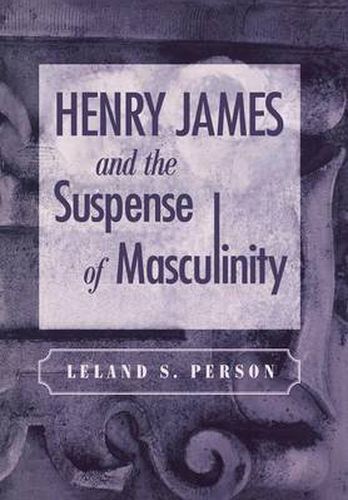Readings Newsletter
Become a Readings Member to make your shopping experience even easier.
Sign in or sign up for free!
You’re not far away from qualifying for FREE standard shipping within Australia
You’ve qualified for FREE standard shipping within Australia
The cart is loading…






Using insights from feminist studies, men’s studies, and gay and queer studies, Leland Person examines Henry James’s subversion of male identity and the challenges he poses to conventional constructs of heterosexual masculinity. Sexual and gender categories proliferated in the nineteenth and early twentieth centuries, and Person argues that James exploited the taxonomic confusion of the times to experiment with alternative sexual and gender identities. In contrast to scholars who have tried to give a single label to James’s sexuality, Person argues that establishing James’s gender and sexual identity is less important than examining the novelist’s shaping of male characters and his richly metaphorical language as an experiment in gender and sexual theorizing.
Just as an author’s creations can be animated by his or her own sexuality, Person contends, James’s sexuality may be most usefully understood as something primarily aesthetic and textual. As Person shows in chapters devoted to some of this author’s best-known novels-Roderick Hudson, The American, The Portrait of a Lady, The Bostonians, The Ambassadors, The Golden Bowl-James conducts a series of experiments in gender/sexual construction and deconstruction. He delights in positioning his male characters so that their gender and sexual orientations are reversed, ambiguous, and even multiple. Ultimately, he keeps male identity in suspense by pluralizing male subjectivity.
$9.00 standard shipping within Australia
FREE standard shipping within Australia for orders over $100.00
Express & International shipping calculated at checkout
Using insights from feminist studies, men’s studies, and gay and queer studies, Leland Person examines Henry James’s subversion of male identity and the challenges he poses to conventional constructs of heterosexual masculinity. Sexual and gender categories proliferated in the nineteenth and early twentieth centuries, and Person argues that James exploited the taxonomic confusion of the times to experiment with alternative sexual and gender identities. In contrast to scholars who have tried to give a single label to James’s sexuality, Person argues that establishing James’s gender and sexual identity is less important than examining the novelist’s shaping of male characters and his richly metaphorical language as an experiment in gender and sexual theorizing.
Just as an author’s creations can be animated by his or her own sexuality, Person contends, James’s sexuality may be most usefully understood as something primarily aesthetic and textual. As Person shows in chapters devoted to some of this author’s best-known novels-Roderick Hudson, The American, The Portrait of a Lady, The Bostonians, The Ambassadors, The Golden Bowl-James conducts a series of experiments in gender/sexual construction and deconstruction. He delights in positioning his male characters so that their gender and sexual orientations are reversed, ambiguous, and even multiple. Ultimately, he keeps male identity in suspense by pluralizing male subjectivity.